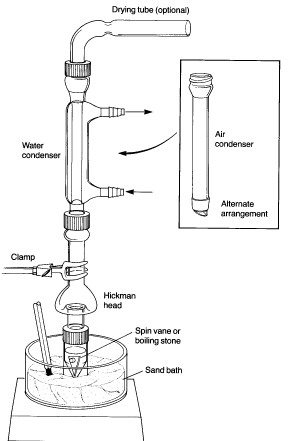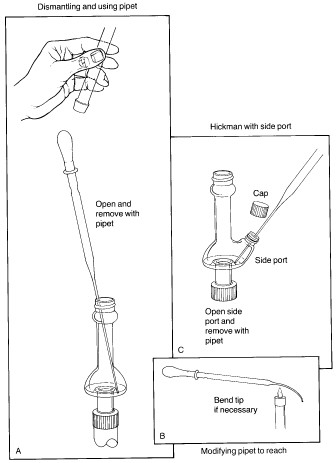
The key to successful microscale distillations is in avoiding long distillation paths, since this is the main factor leading to loss of material during distillation. Short-path microscale distillations are carried out using the Hickman distillation head as the receiving device for the distilled liquid. Two types of Hickman head, 'ported' and 'unported', are shown in the figure below. The complete apparatus consists of a flask or vial containing the liquid and a magnetic spin vane or boiling stone, attached to the bottom joint of the Hickman head. If desired, a condenser is attached to the top joint. A thermometer can be suspended down the middle in order to record the distilling temperature, with the bottom of the thermometer in the lower part of the Hickman head just below the circular well. The vapours of the heated liquid rise upward and are cooled and condensed on either the inside walls of the Hickman head or on the walls of the condenser. As liquid drains downward, it collects in the circular well at the bottom of the still. The well can contain as much as 2-mL of liquid.
